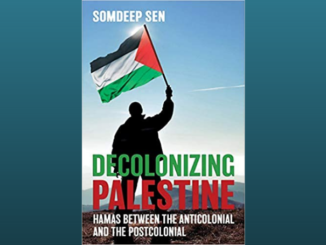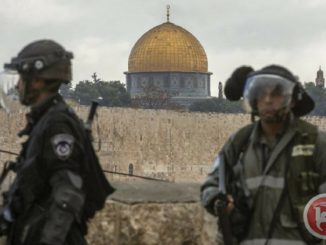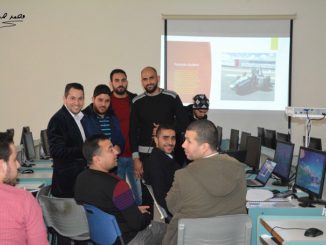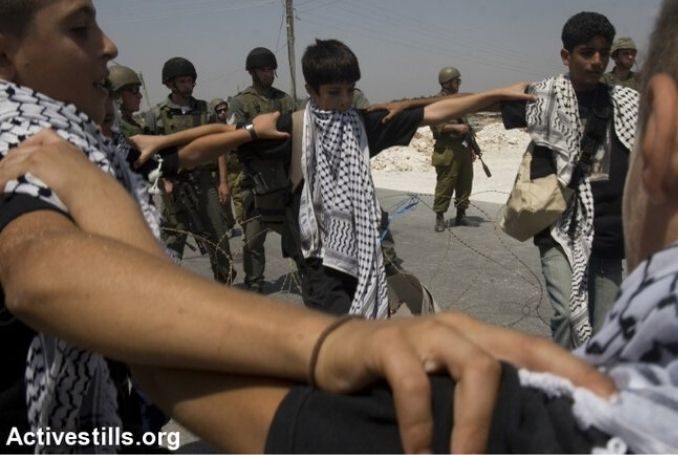
By Benay Blend
When newly elected U.S. Congresswoman Rashida Tlaib took office on January 3, 2019, in Washington, D.C., she made history by wearing a traditional thobe (dress) that featured hand-stitched embroidery known as tatreez, a craft passed down by women in Tlaib’s family. As a young girl, she watched her mother stitch flowers and other designs specific to her particular village.
Thinking about those days, Tlaib explains, brings up memories of her mother’s pride in her Palestinian heritage. “My mother knows struggle” Tlaib continues, thereby bringing together the importance of cultural endurance and resistance, two elements that are interwoven in the Palestinian struggle for liberation.
Indeed, what Edward Said calls “memory and its inventions” has never been more important than today. In his article “Invention, Memory and Place,” Said contends that nationalists employ the study of history to ensure loyalty to the homeland, a national narrative designed to confirm for the collective masses a particular place in the world.
In Palestine, there are two competing narratives, but only one that is the truth. On the one hand, there is the Israeli version that privileges Jewish Zionists as the true inheritors of the land, a chronicle that is indeed a false history as it erases prior Palestinian presence on the land. Palestinian accounts, on the other hand, stress the long ties of an indigenous people to the land.
As Ramzy Baroud explains, is “the story of Palestine is the story of the Palestinian people,” a history that centers, in particular, the narrative of their resistance. At this precise juncture in the Occupation’s history, cultural resistance is more important now than ever.
In response to Trump’s announcement of the Deal of the Century, pundits are predicting capitulation as the only possible future for Palestinians. For example, Jeremy Bowen, Middle East editor for the BBC, expounds that Palestinians are being presented with a “surrender document,” the outcome of which gives Israel everything it wants if Palestinians refuse. Even worse, Bowen continues, if Palestinians respond with “more anger, despair and hopelessness” (a misguided assessment at best of their situation now), the Middle East will go up in smoke.
While the situation is no doubt dire, it is not all doom and gloom. Indeed, as Fatima Abbadi notes, the art of tatreez assumes many different functions, but of significance here are protest and resistance. In her work, Abbadi stresses the role of embroidery as a “social network.” Specifically, during the First Intifada, when the Palestinian flag was illegal, women participated in political resistance by combining traditional patterns with emblems of maps, flags or political slogans. Today, Abbadi says, tatreez continues to bind communities together, as exemplified by #TweetYourThobe, a movement started by writer Susan Muaddi Darraj to honor Tlaib along with all Palestinian women who tweeted pictures of their traditional.
Despite ongoing efforts to erase the Indigenous presence, in Palestine and around the world, the push back will be successful. In an article aptly titled “For Palestinians, Giving Up is No Option,” Fawaz Turki asserts that what matters is the “ability of the weak to shape the story, not the reality on the ground.” For this reason, the Palestinians are “ennobled,” exemplifying what Edward Said has called “the power of culture over the culture of power,” an equation that attests to the incredible endurance of the people.
“In Palestine,” writes Ehab Bessaiso, “cultural activity is also an act of resistance.” For nearly thirty years, Palestinian architect Nadia Habash has sought to reinforce her people’s national–rather than colonial—narrative by restoring traditional buildings that are still in use today.
“Palestinian architecture, [is] an integral part of our cultural heritage and national identity,” she explains, and as such “it is subjected to systematic destruction by the Israeli occupation, which aims to eliminate evidence of the existence of our ancestors on this land.” In this way, Habash uses her craft as a tool to fight policies of exclusion and extinction.
“Preserving our cultural and natural heritage, keeping it alive, and reflecting it in our new designs is part of our national struggle,” Habash, director of Habash Consulting Engineers and adjunct lecturer at Birzeit University, continues. Thereby she establishes her place as part of a generation of Palestinians seeking to preserve the identity of Palestine’s cultural spaces and the history of their country.
In the Diaspora, events are happening too. In advance of the first Palestine Writes Literature Festival, New York University, Kimmel Center, March 27-29, 2020, two participating authors, Susan Abulhawa and Ibtisam Azem, will read from their latest novels and speak on a panel moderated by educator Yamila Hussein-Shannan.
Abulhawa’s The Blue Between Sky and Water (2015) and Ibtisam’s The Book of Disappearance (2019) are two novels in which the past is always present, as such both are tasked with what Edward Said described as a means “to reclaim, rename, and re-inhabit” through the use of words.
Moreover, in an interview with Ben East, Azem asserts: “You can’t give in to hopelessness.” In this vein, she continues to believe in a one-state solution with equal rights for all, the right of return for refugees, and reparations for what was lost to the occupation.
“For people who are discriminated against,” she concludes, “hope isn’t a privilege, it’s a necessity.” This sums up, perhaps, the raison d’etre of the festival, as it is “devoted to the belief that art challenges repression and creates bonds between Palestine and the rest of the world.” In this way, the organizers hope not only to reshape the official stories but also to ensure that the Palestinian story is shared with an international audience.
Dovetailing with Palestine Writes, Samidoun Prisoner Solidarity Network along with nine other organizations, has called on internationals to join protests in the besieged Gaza Strip who will be celebrating the second anniversary of the Great Return March in Gaza. Participants in Palestine Writes are invited to join the NYC Mobilization for Land Day and the Great Return March.
On March 29, 2020, all will meet at Washington Square Park, 59 Washington S at 2 pm. Much more than a protest, the weekly marches celebrated Palestinian culture in the midst of gunfire from Israeli snipers across the fence. As participant Fadi Abu Shammalah explains, the events featured Gazans dancing the dabke, elders organizing educational activities, and women cooking Palestinian dishes, such as Makhan, (roasted chicken with onions, sumac and pine nuts) and maftool (a couscous dish).
In Azem’s Book of Disappearance, Ariel, the Israeli protagonist in the story, “laugh[s]” when he recalled a story about Prime Minister Churchill’s visit to Tel Aviv. Prior to his arrival, the current mayor “took big old trees from adjacent areas and spread them around” so that they would appear to have been there for ages.
After witnessing a falling tree, Churchill was alleged to say: “Without roots nothing will grow here”. Perhaps instead of interpreting the statement as a joke, Ariel should have pondered the meaning of Churchill’s words. Rooted in the land, possessing sumoud (steadfastness) that Ariel will never understand, Palestinians who are armed with cultural resistance will forever insist on remaining in (and returning to) the land.
– Benay Blend received her doctorate in American Studies from the University of New Mexico. Her scholarly works include Douglas Vakoch and Sam Mickey, Eds. (2017), “’Neither Homeland Nor Exile are Words’: ‘Situated Knowledge’ in the Works of Palestinian and Native American Writers”. She contributed this article to The Palestine Chronicle.
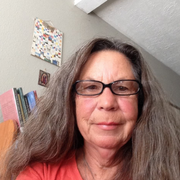
– Benay Blend earned her doctorate in American Studies from the University of New Mexico. Her scholarly works include Douglas Vakoch and Sam Mickey, Eds. (2017), “’Neither Homeland Nor Exile are Words’: ‘Situated Knowledge’ in the Works of Palestinian and Native American Writers”. She contributed this article to The Palestine Chronicle.

